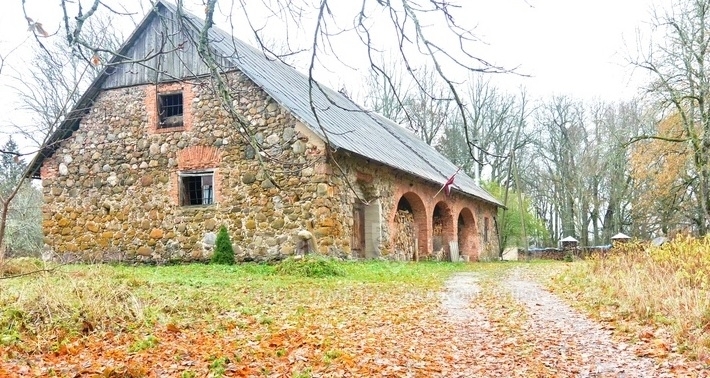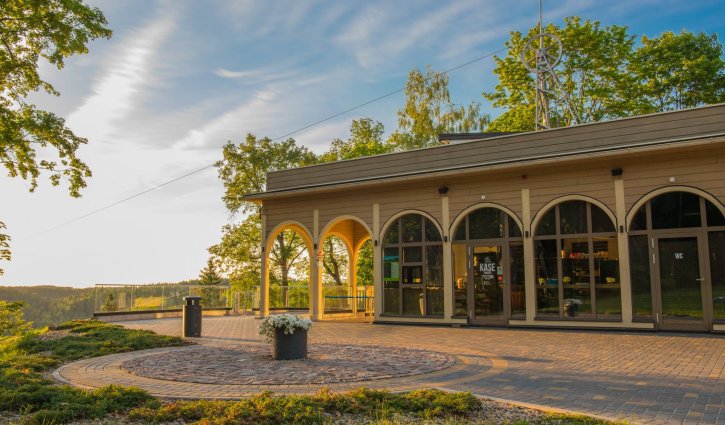
The manor house was established when masters Pletenbergs, Galēns and Brigenejs in 1498-1540 years donated the land plots to a family of Akerstofs.
Akenstakas manor house was one of the ten manors of Mālpils parish of Riga County in Vidzeme province. Its Latvian name, most probably, is the name of the first owners Akerstafs, which was a bit "improved" in the Latvian language.
|
Coordinates |
57.070733, 25.053086
|
The history of the manor house
15th - 16th century
The name of the current settlement was preserved from the name of Akenstaka manor house (at that times - Klingenberg, in translation loud hill), which was formed here when Livonian order masters Pletenbergs (Plettenberg), Brigenejs (Brüggenei) and Galens (Galen) in time from 1498 until 1540 assigned to Akerstafs (Ackerstaff) family 6 unci of land in Nītaure (Nitau) vicinity, 2 unci of land, a place for tavern and orchard opposite Mālpils (Lemburg), and for Klauss Zudens (Suden) a hey meadow with the farm in the area of 4 uncus. The Akenstakas manor was one of the ten manors of the Riga county Mālpils parish in Vidzeme province, and its Latvian name, most probably, is the name of the first owners Akerstafs, which was a bit "improved" in the Latvian language.
17th century
The manor house belongs to Akerstafs family for 198 years. Then five generations of Akerstafs come, when in 1696 the assessor (magistrate's assistant) Bengts Akerstafs dies without any male heirs, and the manor house falls in the hands of his son-in-law, district judge Justs Palmenbergs (Palmenberg).
18th century
At the beginning of the century, the plague was raging in Vidzeme. Out of 75 manor inhabitants, only 5 survive. In 1742 the manor house is bought by general superintendent’s wife Marta Hedviga fon Briuninga (Bruining), but in 1780 the manor house is owned by Buku (Suddenbach) manor owner rotmisrtz Salomons Johan's fon Gersdorfs (Gersdorff). Gersdorfs merges the manor with the neighbouring Mūra manor house (Muremoise, Rodenhof), which he had bought for 10 000 thalers from the landrat Fridrihs Vilhelms fon Taube. In 1798 the property is mortgaged for 20 000 thalers to former district judge Fridrihs Nikolajs (Nicolai).
19th century
In 1837 the property is bought by Karolīna fon Tīzenhauzena (Tiesenhausen), who 25 years later cedes the manor with 248 people to her son for 40 000 roubles. Around 1886 the manor falls in hands of Kniediņi (Kaltenbrunn) manor house owner, the representative of Vidzeme chivalry matriculated Balt German landlords' and traders' family - Ernsts fon Blankenhāgens (Blanckenhagen). During this time, a park, mill, brewery, dairy, brick kiln, sawmill and a school with one class are established in Akenstaka. Water to the manor houses is delivered by oak pipework. Profitable is the pubs of Auzu, Egļi, Zirnīši, and cooperation with Ernst's parents in Allaži manor, where «Allažu ķimelis» (caraway liqueur) is produced. In 1888 the manor land is the third most valuable in the parish. Three of the baron's four children are born in the manor - Kurts Eduards Gotlībs (1887), Herberts Heinrihs (1892) and Hariete Izabella (1902).
20th century
In 1905 the manor house is burned down by rebels, the new house is built in another place, it is more modest. With the beginning of the First World War dragoon regiments of Peterhoff reside in the manor house and build fortifications. The baron sells grain, livestock, inventory and flees. In 1918 the devastating manor is taken over by Ernst's son - Kurts. In 1920 the manor land (1410 ha) is nationalized and divided into 90 farms. The manor centre assigned to the poet K.Jēkabsons and composer A.Kalniņš. Here in "Ulmanis times" butter for export is being produced, societies are established and fairs are being organized. The changes are brought in by the Second World War. It is the time of the refugee processes, then the deportation, the time of the dramatic battle of More, later the time of collective farms «Jaunā Dzīve» and «Draudzība», when the manor houses suffer from vandalism and indifference.
21st century
Up to nowadays, 9 of the 28 buildings of the manor complex have been preserved. Stone half a manor is entirely gone but the houses which once belonged to the manor exist still today - Rūtiņi, Kalna Kalnciemi, Mestri, Kalna Mežakas, Kalna Šķeisteni, Tautas, Pitņi, Kateni, Knauķi, Uspīļi, Akenstaka, Ruļļi and Peļņi. In the 21st century the social life is concentrated in More parish centre, and the part of perishing manor houses and the park is private property.
Source: Informative stand of Akenstaka manor, which is situated in Akenstaka, Sigulda county, More parish. The author of the text - Marika Celma.












